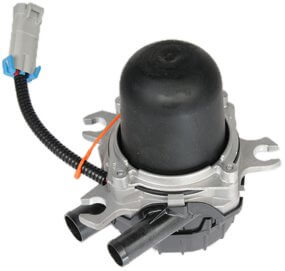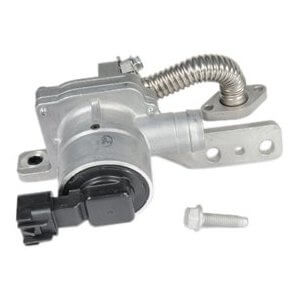Secondary Air Readiness Monitor — What it does
Learn About Secondary Air and How the Secondary Air Readiness Monitor Works
Secondary air systems are used to jump start a cold catalytic converter to get it up to operating temperature by pumping outside air into the exhaust to provide extra oxygen to the catalyst. It’s designed to cut down on cold start emissions. A catalytic converter must reach approximately 400° to 600°F in order to properly reduce emissions. When a cold engine is started, a large amount of fuel is unburned due to the “quench” effect of the cold combustion chamber and cylinder head. That unburned fuel then enters the cold catalytic converter where there’s not enough oxygen to burn off the excess fuel. Lacking extra oxygen and heat, that raw fuel is sent out the tailpipe as pollutants.
How secondary air works
The air system utilizes a belt driven or electrically
powered air pump and a series of valves to pump extra outside air directly into the catalytic converter. The solenoid operated valves open to allow air to pass into the converter, but close when the system is off to prevent exhaust gasses from back-flowing into the atmosphere.
What the readiness monitor checks
The Secondary Air System Monitor checks for component integrity and system operation, and tests for faults in the system. The computer runs this Monitor once per trip.
During cold starts, the readiness monitor expects to see a extra oxygen in the upstream oxygen sensor due to the incomplete combustion caused by engine quenching. By adding more air to burn the excess fuel, the converter temperature rises and begins burning off the fuel, causing a drop in oxygen at the downstream sensor. Once the extra fuel in burned off, the PCM shuts off the pump and that shut off is detected by the oxygen sensors.
A failure in either the pump or the solenoid valves can be determined if the PCM doesn’t see the expected oxygen levels in the exhaust.
Once the converter reaches operating temperature
The Secondary Air System Monitor is a “Two-Trip” monitor. If a fault is found on the first trip, the computer temporarily saves this fault in its memory as a Pending Code. The computer does not command the MIL on at this time. If the fault is sensed again on the second trip, the computer commands the MIL “On,” and saves the code in its long-term memory.
©, 2022 Rick Muscoplat
Posted on by Rick Muscoplat

